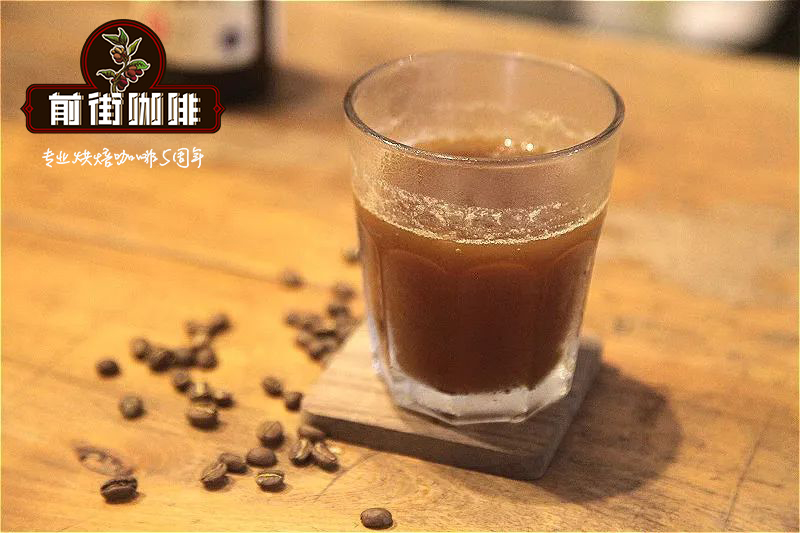Steps for processing TOPAA coffee beans in Sassini Manor, Kenya. What is the best brand of Kenyan coffee beans?

Professional coffee knowledge exchange More coffee bean information Please pay attention to coffee workshop (Weixin Official Accounts cafe_style)
Kenya coffee sasini estate round beans AA kenya sasini AA peaberry
SASINI Estate is located in Kiambu area around Mountain Kenya, about 1800 meters above sea level. It has beautiful scenery, pleasant climate, sufficient light and excellent soil conditions. It belongs to fertile acid red soil, loose soil, deep soil layer and good drainage. PH value is between 5.5 and-6.5.
After leaving CRI Kenya National Coffee Institute, our group drove to SASINI Red Fruit Processing Plant not far from CRI.
SASINI Red Fruit Processing Plant Interior 1 SASINI Red Fruit Processing Plant Interior 1
SASINI Limited was originally established in 1952 and was one of the first coffee and tea companies established after Kenya's independence. It has obtained many certifications such as UTZ, Rainforest Alliance and Kenya Bureau of Standards Diamond mark.
SASINI UTZ certification signs everywhere in the red fruit processing plant SASINI UTZ certification signs everywhere in the red fruit processing plant
As a coffee practitioner, red fruit processing has always been part of my dream to get to know on the ground. However, the timing of our trip was unfortunate. It happened that the red fruit treatment of the previous season had just ended, and the summer fruit had not yet matured. It was a little regrettable.
Here is a digression. During my trip to Kenya for a few days, I deeply felt the influence of British colonial culture on the life and culture of Kenyan people. Like this black boy who explained the whole process to us, he didn't read much, but he could speak very pure British English, and his behavior was very stable with a gentleman's style unique to Britain.
After entering the pulp separator, the pulp, impurities and substances that do not float on the water surface (stones, garbage, bad beans, etc.) are removed from the kernel, which is the coffee beans to be processed next.
In the pulp removal machine, there can be a coarse step classification function, divided into P1, P2, PL into different fermentation tanks, the classification principle here is mainly the principle of water buoyancy, the fuller the beans, the greater its density, it will sink at the bottom, the worst is at the top, that is PL. In the subsequent treatment plants we went to, they all belonged to the treatment plants specializing in high-quality coffee, and the PL grade had been directly rejected.
The coffee kernel stays in the fermentation tank for 24-48 hours, mainly to remove the mucus of the coffee bean itself and the mucous membrane of the kernel itself. Then enter the soaking pool for cleaning, soaking time 12-24 hours, the above two periods of time can also be according to the buyer designated time for fermentation and soaking, in order to achieve some brands of raw beans unique flavor effect.
The first two processes usually take 72 hours, but in recent years, each treatment plant will also carry out customized treatment according to the requirements of the acquirer, with 48 hours and 108 hours. Then they went to the sun to dry. At present, several treatment plants in Kenya are using this kind of scaffolding for drying. Compared with drying on the ground, the scaffolding has better ventilation effect, and it is not easy to mix sundries, nor easy to produce soil and other flavors.
After drying, the coffee beans with shells will be sent to the next processing step-shelling plant, which is also one of the destinations we will go to tomorrow.
END
Important Notice :
前街咖啡 FrontStreet Coffee has moved to new addredd:
FrontStreet Coffee Address: 315,Donghua East Road,GuangZhou
Tel:020 38364473
- Prev

KENYA Kenya Burashen roasted coffee beans taste good _ how do Kenyan coffee beans roast?
Professional coffee knowledge exchange more coffee bean information Please follow the coffee workshop (Wechat official account cafe_style) in recent years, more and more people love coffee, and they know more and more about the taste, aroma and other aspects of coffee. In the past, we must have heard the older generation always say: coffee must not be sour! Coffee is shoddy as long as it is sour! one
- Next

An introduction to the History of Yadini Coffee Manor in Kenya _ reasons why Kenyan coffee beans were selected by Starbucks
Professional coffee knowledge exchange more coffee bean information Please follow the coffee workshop (Wechat official account cafe_style) Coffee in Kenya does not have a long history. It first appeared in Kenya as a coffee drink imported from Ethiopia in the 19th century. Until the beginning of the 20th century, the bourbon coffee tree was introduced by the St. Austin mission, and coffee cultivation began in Kenya. Yadini
Related
- Detailed explanation of Jadeite planting Land in Panamanian Jadeite Manor introduction to the grading system of Jadeite competitive bidding, Red bid, Green bid and Rose Summer
- Story of Coffee planting in Brenka region of Costa Rica Stonehenge Manor anaerobic heavy honey treatment of flavor mouth
- What's on the barrel of Blue Mountain Coffee beans?
- Can American coffee also pull flowers? How to use hot American style to pull out a good-looking pattern?
- Can you make a cold extract with coffee beans? What is the right proportion for cold-extracted coffee formula?
- Indonesian PWN Gold Mandrine Coffee Origin Features Flavor How to Chong? Mandolin coffee is American.
- A brief introduction to the flavor characteristics of Brazilian yellow bourbon coffee beans
- What is the effect of different water quality on the flavor of cold-extracted coffee? What kind of water is best for brewing coffee?
- Why do you think of Rose Summer whenever you mention Panamanian coffee?
- Introduction to the characteristics of authentic blue mountain coffee bean producing areas? What is the CIB Coffee Authority in Jamaica?

